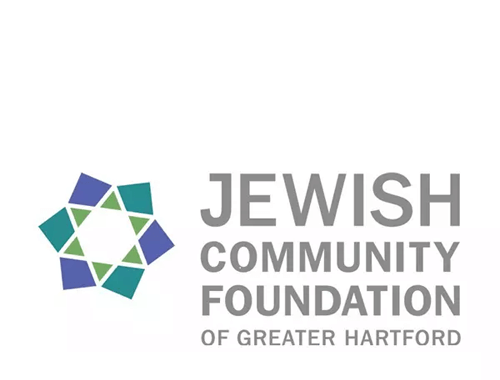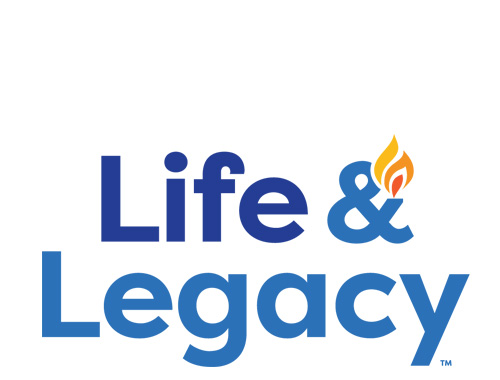Schechter Shavua: February 7, 2025
What’s Growing on YOUR Water Bottle? Middle Schoolers Delve into Bacteria!
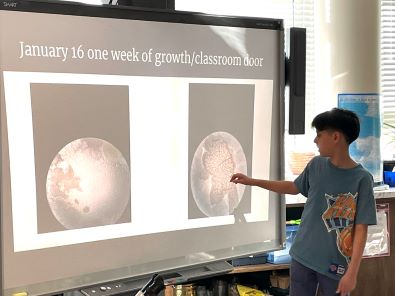 Is the “5-Second Rule” a myth or reality? Middle school students have been getting their hands dirty (literally!) as they delved into studies of bacteria! In the process of examining the microscopic world, they first composed a purpose question and hypothesis, then designed an experiment, collecting and analyzing data, taking photographs, and drawing conclusions. Students presented their findings by exhibiting their research electronically and in an oral presentation to classmates and members of the school community. Audience members were blown away by students’ understanding of the scientific research process and the comfort they showed presenting their findings in front of a group!
Is the “5-Second Rule” a myth or reality? Middle school students have been getting their hands dirty (literally!) as they delved into studies of bacteria! In the process of examining the microscopic world, they first composed a purpose question and hypothesis, then designed an experiment, collecting and analyzing data, taking photographs, and drawing conclusions. Students presented their findings by exhibiting their research electronically and in an oral presentation to classmates and members of the school community. Audience members were blown away by students’ understanding of the scientific research process and the comfort they showed presenting their findings in front of a group!
Which of these topics would make your skin crawl?
- 5 Second Rule
- Double Dipping
- Meat vs Heat (uncooked vs cooked chicken)
- Dawn Dish Soap vs Walgreens brand
- Which water fountain has the most bacteria?
- Hand soap vs Hand sanitizer
- Which body part has the most bacteria?
- Which is a better wipe? (Clorox vs Up & Up)
- Which toothpaste works better?
Click HERE to see more photos of students exploring the microscopic world!
Are the Hallel Prayers an Ear Worm? Ask an Alim Student!
Guest article by teacher Tiff Lehrer
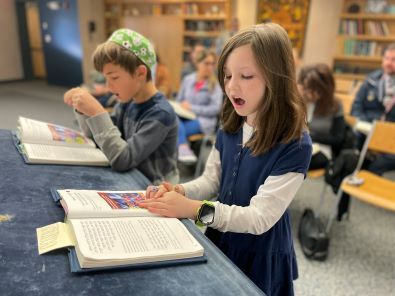 The beauty of Rosh Hodesh is that since it comes once a month, there are plenty of opportunities to practice its special prayers! Alim’s Judaic Studies classes (gr. 3-4) have learned about Rosh Hodesh (or the "New Moon"), which signifies the start of a new Hebrew month. Did you know that before the days of Google calendars (well, waybefore), there were Jews whose jobs it was to identify the New Moon and light fires on the mountain tops to notify the rest of the community of the arrival of the new moon? Now we have a set calendar to know when Rosh Hodesh falls, but the holiday is still set apart with special added prayers.
The beauty of Rosh Hodesh is that since it comes once a month, there are plenty of opportunities to practice its special prayers! Alim’s Judaic Studies classes (gr. 3-4) have learned about Rosh Hodesh (or the "New Moon"), which signifies the start of a new Hebrew month. Did you know that before the days of Google calendars (well, waybefore), there were Jews whose jobs it was to identify the New Moon and light fires on the mountain tops to notify the rest of the community of the arrival of the new moon? Now we have a set calendar to know when Rosh Hodesh falls, but the holiday is still set apart with special added prayers.
The Alim class learned the special prayer of Hallel with Rabbi Chatinover and why it's said on special holidays, including Rosh Hodesh. The tunes were very melodic, and by the end of a few weeks, the Alim students could be heard humming them in every class. Rabbi Chatinover’s gentle and fun way of teaching gave our Alim students a glimpse of what their future classes in middle school will be like!
My Experience at Rosh Hodesh Sh'vat
Guest article by teacher Erica Moses
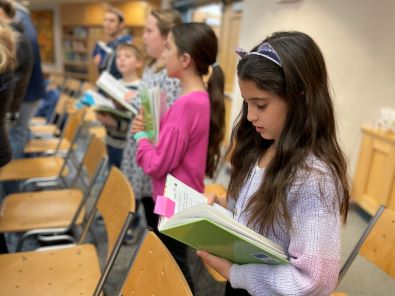 It’s not every day that one finds themselves in awe, witnessing something remarkable unfold around them. Today, I experienced that wonder as my Alim students recited, sang, and chanted the special prayers of praise they’ve been learning since December. I was deeply moved by the confidence and pride with which all twenty of them voiced each word. In that moment, I truly understood the profound pride that comes with being Jewish—a feeling that resides in both heart and soul. I could sense the deep connection my students and their parents shared, as if bound by an invisible thread of tradition and faith. As the service ended, I couldn’t help but rise from my seat, eager to praise them. That is what a teacher does when the roles reverse—when her students become her teachers, teaching her a lesson she will cherish for years to come.
It’s not every day that one finds themselves in awe, witnessing something remarkable unfold around them. Today, I experienced that wonder as my Alim students recited, sang, and chanted the special prayers of praise they’ve been learning since December. I was deeply moved by the confidence and pride with which all twenty of them voiced each word. In that moment, I truly understood the profound pride that comes with being Jewish—a feeling that resides in both heart and soul. I could sense the deep connection my students and their parents shared, as if bound by an invisible thread of tradition and faith. As the service ended, I couldn’t help but rise from my seat, eager to praise them. That is what a teacher does when the roles reverse—when her students become her teachers, teaching her a lesson she will cherish for years to come.
Click HERE to see more Alim Rosh Hodesh service Photos
6th Graders Wrap Themselves in Jewish Tradition
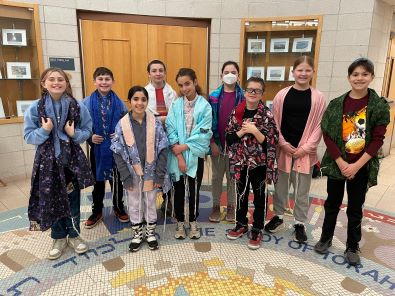 When a child approaches the age of B. Mitzvah, they begin learning the rich traditions and rituals of Judaism. One favorite Schechter milestone occurs in 6th grade , when students make their own tallitot ; they learn about the meaning and purpose of tallit (the rectangular cloth worn during morning services) and tzitzit (the fringes tied to the corners of the tallit). They study the history of tekhelet —the rare, ancient blue dye that disappeared from the world for almost 2,000 years before being resurrected in Israel. They select a fabric that speaks to them, carefully ironing a prayer onto the atara (neck piece). And then, last week, with their parents’ help, they tied tzitzit onto their own tallit ! Schechter alumni often treasure these tallitotwell into adulthood, and we hope that these 6th graders will wear their new creations with pride for years to come.
When a child approaches the age of B. Mitzvah, they begin learning the rich traditions and rituals of Judaism. One favorite Schechter milestone occurs in 6th grade , when students make their own tallitot ; they learn about the meaning and purpose of tallit (the rectangular cloth worn during morning services) and tzitzit (the fringes tied to the corners of the tallit). They study the history of tekhelet —the rare, ancient blue dye that disappeared from the world for almost 2,000 years before being resurrected in Israel. They select a fabric that speaks to them, carefully ironing a prayer onto the atara (neck piece). And then, last week, with their parents’ help, they tied tzitzit onto their own tallit ! Schechter alumni often treasure these tallitotwell into adulthood, and we hope that these 6th graders will wear their new creations with pride for years to come.
Click HERE to view more photos!
Volunteering at the House of Bread: An Inside Look
by Sammy Weiss (8th grade/Amirim)
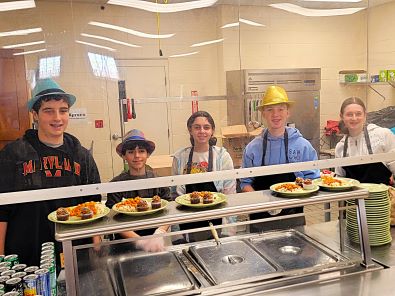 On Tuesday, January 14th, five 8th graders and one parent chaperone took a trip to House Of Bread, a social services organization in the North End of Hartford. Once we got there, we were greeted by a man named Tom who helps to run House Of Bread. He told us about how it started, why it started, and why he got involved with it. He then told us to put aprons on and fun hats on so we could serve food. We got in the kitchen and started making plates of food for those who need it. They were the friendliest people, and so many of them tried to have conversations with us in the short time they were in front of us.
On Tuesday, January 14th, five 8th graders and one parent chaperone took a trip to House Of Bread, a social services organization in the North End of Hartford. Once we got there, we were greeted by a man named Tom who helps to run House Of Bread. He told us about how it started, why it started, and why he got involved with it. He then told us to put aprons on and fun hats on so we could serve food. We got in the kitchen and started making plates of food for those who need it. They were the friendliest people, and so many of them tried to have conversations with us in the short time they were in front of us.
We served food for about 1 hour and 30 minutes, giving out about 100 plates of food. Each plate had rice, chickpea curry, cake, and either Sprite or Coke. Once we finished serving the food, Tom took us to the back to show us all of the food in their pantry. It would take a family of 5 a couple months to go through all that food, but when you are serving 100 people per day, you are going to need that much food every week! Once that was over, we said goodbye to the amazing and kind staff before taking a picture in front of the House Of Bread mural. We all felt very grateful that we know when our next meal is.
Thanks to Schechter parent Mollie Benoni for taking the photo while she chaperoned!
The State of Israel, Manna from Heaven, and Maslow’s Pyramid
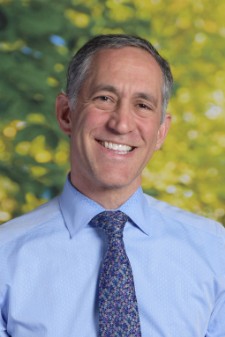 After crossing the Sea of Reeds, the Israelites are free from Egypt, but they are starving. God sends quail and then manna—but the manna will only appear six out of seven days, so food insecurity is built into the system. They have no permanent homes or solid shelters—but God commands them to put a jar of manna aside “to be kept [as a memorial] for future generations.” With all their vulnerability and instability, we might wonder: is this the best time to teach the laws of Shabbat, or to create a museum of Jewish heritage?
After crossing the Sea of Reeds, the Israelites are free from Egypt, but they are starving. God sends quail and then manna—but the manna will only appear six out of seven days, so food insecurity is built into the system. They have no permanent homes or solid shelters—but God commands them to put a jar of manna aside “to be kept [as a memorial] for future generations.” With all their vulnerability and instability, we might wonder: is this the best time to teach the laws of Shabbat, or to create a museum of Jewish heritage?
Seventy years ago, psychologist Abraham Maslow articulated a hierarchy of human needs, in the form of a pyramid. At its base are basic physiological needs: food, water, shelter. Next come broader physical needs: health, employment, etc. Healthy relationships come next, followed by self-esteem, and finally, “self-actualization”—quests for morality, creativity, and meaning. Maslow theorized that in general, human beings don’t focus on higher levels until lower ones are secure.
University of Michigan Professor Ron Inglehart applied Maslow’s theory to nations. For example: activists had been working for racial and gender equality in America for over a century by the 1950s, but widespread societal change only began to happen in the 1960s. Why? According to Inglehart, the broad social justice movements of the 60s couldn’t fully take root until America experienced the growing prosperity of the 50s. Similarly, what was the National Endowment for the Arts only established in 1965? Because the arts are a post-materialist need, and countries only act to fill those needs after basic material needs are widely satisfied.
But in many ways, Israel has been an exception. As several political scientists have argued, Israeli society has been grappling with “post-material” questions of morality, creativity and meaning since Israel’s founding. The country’s early socialist ethos was, in many ways, an attempt to build a society that simultaneously provided for material needs while also satisfying moral beliefs. The government-sponsored Israeli Song Festival began in 1960, and the Bezalel Academy for the Arts was started in 1906, even though Israel’s basic safety and viability was not assured at either point in time!
I saw an example of this at the opening session of the Prizmah Conference this week. Shlomi Shaban, an Israeli musician, was talking to 1,200 Jewish day school leaders, administrators, board chairs, and researchers. He performed music that he had composed following October 7th, and spoke about creating art following tragedy. Those songs, and other art that accompanied his presentation, demonstrated the way Israel has always sought to build all levels of its pyramid of needs at once: security and ethics, creativity andprosperity.
And perhaps this remarkable trait can be traced back to this week’s parashah . Well before the Jewish people had permanent shelter, secure borders, or visibly reliable food, they created poetry, learned to practice mitzvot, and planned for future generations. They sought to build the pyramid at both ends. Even in times of uncertainty and threat, I strongly believe in our responsibility to follow in their path.
Shabbat shalom,
Rabbi Jonathan Berger
Head of School
Questions for the Shabbat table:
1. Can you think of any Jewish practices or mitzvot that seem to address higher-level needs even when lower-level needs aren’t guaranteed?
2. When have you felt torn between lower-level and higher-level needs on Maslow’s scale?
Solomon Schechter Day School
of Greater Hartford
26 Buena Vista Road
West Hartford, CT 06107
© Solomon Schechter Day School of Greater Hartford | Site design Knowles Kreative

